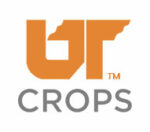LINKS
Cutout, DD60's, NAWF Rules and Termination of Insecticide Treatments
Cutout is when the average plant in a field has five nodes above a mainstem, first position white flower (i.e., NAWF5). At cutout, current white flowers represent the last bolls that will normally make a significant contribution to yield. New terminal growth slows to a halt as the nutrient demand of developing bolls increases.
DD60s, or heat units above 60F, are used to estimate the developmental rate of cotton. Cotton does not grow when temperatures are below 60F. Thus, during a 24 hour period, the difference between the average temperature and 60F is a measure of a plant’s growth rate. For example, during a day with a maximum and minimum temperature of 95F and 65F, a plant accumulates 20 DD60’s (95+65=160 … 60/2 = 80 … 80-60=20 DD60s).
NAWF Rules: Research indicates that bolls which have accumulated a total of 350-400 DD60s are unlikely to be injured by new infestations of bollworm, tobacco budworm, plant bugs, boll weevils, and probably stink bugs. Thus, NAWF5 + 350 DD60s represents a stage in crop development where insecticide applications targeting these pests are no longer necessary. However, this rule may not apply to all boll feeding pests (such as fall armyworm), and it assumes that previous insect control has been adequately maintained.
Bolls reach physiological maturity at about 850 DD60s. NAWF5 + 850 DD60’s approximates the time when a field can be defoliated without reducing yield. Bolls require nutrients for development until physiological maturity. Thus, the NAWF5 + 350 DD60 rule does not apply to leaf-feeding or sap-feeding pests that can potentially reduce the amount of photosynthate being supplied to bolls. Pests such as loopers should be treated after NAWF5 + 350 DD60s if they threaten premature defoliation before NAWF + 850 DD60s. As the crop nears physiological maturity, susceptibility to defoliating and sap-feeding pests decreases.







